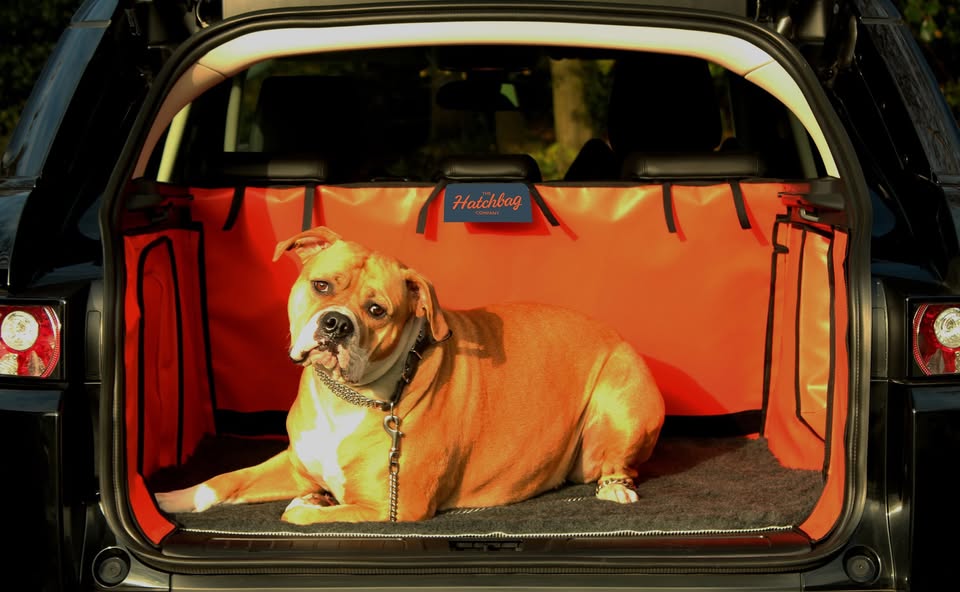Muddy paws, beach sand, shedding season—your dog brings joy and a mess. A good boot liner for dogs turns your car’s trunk into a stress-free zone, so post-walk cleanup takes minutes instead of an afternoon detail. Whether you drive a compact hatch, a family SUV, or a wagon with the seats down, the right liner protects the cargo floor, side walls, and bumper while giving your pup a comfy, non-slip place to ride.
What a great boot liner actually does
A dog-ready trunk liner isn’t just a blanket. It should:
- Shield all high-wear areas (floor, seat backs, sometimes side panels).
- Resist water and mud so wet coats and spilled water bowls don’t soak through.
- Prevent sliding with a grippy base or anchors.
- Clean quickly—shake, wipe, or hose down.
- Install and remove fast for grocery runs or human-only road trips.
If you carry crates or folding strollers, look for a liner that plays nicely with cargo tie-downs and seat-split releases.
Materials that matter
- Quilted Oxford/polyester with waterproof backing: The go-to for most owners. It’s cushy for long rides and wipes clean. Make sure the waterproofing is a bonded layer (TPU/PU), not just a “spray”—bonded coatings last longer.
- Heavy-duty PVC/rubberized liners: Ultra-tough and truly waterproof; great for beach trips and working dogs. They can be stiff in cold weather but hose off beautifully.
- Thermoformed trays (raised-lip mats): Excellent for catching meltwater and sand. Pair with a soft topper for comfort and traction.
- Fleece or faux-shearling toppers: Add warmth for senior dogs; use as a removable comfort layer you can machine wash.
Look for non-slip underlay, particularly if your cargo floor is slick plastic. A shifting liner is annoying for you and unsettling for your dog.
Fit: measure once, buy right
A universal liner can work, but a near-custom fit keeps grit out of seams and stops bunching. Measure:
- Floor length from the seat backs to the tailgate.
- Width at the narrowest point (often between the wheel arches).
- Seat-back height and tailgate drop if you want wall coverage and a bumper flap.
If your rear seats split 60/40 or 40/20/40, choose a liner with zippered seat-back panels so you can fold one section for long cargo while keeping a dog-safe surface on the rest.
Must-have features for dog owners
- Bumper flap: Saves your paint from claws when dogs leap in and out. Some flaps stow with magnets or Velcro when the gate is closed.
- Side-wall wings: Velcro or suction-cup panels that protect carpeted arches and plastic trim from mud streaks.
- Anchoring system: Headrest straps, seat-back tabs, or cargo-tie loops keep the liner planted during braking.
- Non-slip top surface: Ribbing or rubberized quilting helps older dogs brace on turns.
- Integrated pockets: Stash leashes, poo bags, and a roll-up water bowl so you’re never hunting for kit.
- Cutouts for anchors: Slots or flaps to access your cargo hooks, belt points, and child-seat tethers.
- Water-bowl bay or spill guard: A slightly raised zone (or just park the bowl inside a shallow tray) keeps splashes contained.
Traveling with a crate? Choose a liner with hard-point access so you can still strap the crate down. Crate feet won’t tear heavy fabric, but a small poly board underlay spreads weight if needed.
Comfort and safety
Your dog’s ride quality matters. A quilted surface plus a non-slip mat underneath creates a stable platform that doesn’t telegraph every bump. For winter, add a washable fleece topper; for summer, a breathable mesh pad prevents sweaty bellies. Always secure dogs with a crate or a cargo-area tether/harness anchored to factory points—loose pets become dangerous projectiles in hard stops.
Cleaning routine (the two-minute version)
- Shake it out after each muddy adventure—most grit is loose.
- Vacuum seams once a week to keep hair from nesting.
- Spot-wipe with mild soap; avoid harsh solvents that degrade waterproof coatings.
- Deep clean by hosing the liner outside; hang to dry fully before reinstalling.
For sand-heavy beach days, keep a cheap paintbrush or detailing brush in the cargo pocket—quick sweeps free trapped grains from quilting.
Special cases: multi-dog households and pups in training
- Two dogs, different sizes: Add a soft divider bolster so the little one doesn’t surf into the big one on corners.
- Chewers: Choose PVC-backed fabrics with reinforced edge binding; tuck loose straps.
- Car-sick pups: A tray-style liner under a waterproof quilted cover gives you two layers of defense—peel, wash, wipe, done.
- Senior or arthritic dogs: Pair the bumper flap with a folding ramp so entry and exit aren’t painful.
Boot liner vs. rear-seat hammock
If your trunk is small—or your dog prefers being nearer to you—consider a rear-seat hammock. It protects seat bottoms and backs, blocks footwells, and sometimes clips to the front headrests to create a sling. For big breeds or messy adventures, the boot liner still wins on splash containment and post-trip cleanup.
Quick checklist before you buy
- Does it cover floor, seat backs, and bumper?
- Are there zippered splits for folding seats?
- Is the waterproof layer bonded (not just sprayed)?
- Can you access tie-downs and tether points?
- How fast can you install/remove it?
- Is the surface non-slip and comfortable for long rides?
Final thoughts
The right boot liner for dogs lets you say “yes” to muddy trails, rainy park runs, and beach days without dreading the cleanup. Prioritize fit, waterproofing, non-slip comfort, and fast removal. Add a bumper flap, anchor it properly, and keep a quick brush in the cargo pocket. Do that, and your car stays clean, your dog stays comfy, and the adventures keep rolling—no detailer required






Comments